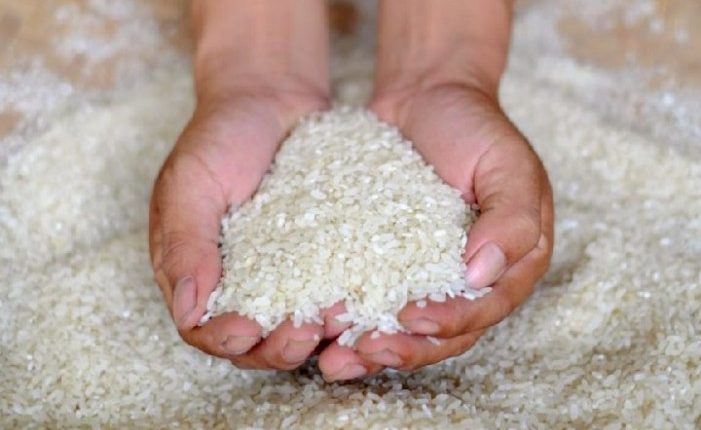Rice Prices Drop, Proof that the Government Has Successfully Reduced the Rate of Inflation
In the last two weeks, it has been observed that the price of rice on the market has decreased. This decline occurred in line with the demand and needs for rice starting to be fulfilled on the market. In this way, it is important to fulfill the supply or stock of rice in all markets and distributors to be aware of fluctuations in rice prices.
Head of the National Food Agency (NFA) Arief Prasetyo Adi explained that by meeting market demand, people’s food needs will be met and rice prices can be controlled. For example, the smooth process of distributing stock to the Cipinang Rice Main Market (PIBC) Jakarta has gradually resulted in rice stocks on the market starting to become sufficient. The additional rice allocation in question is 31,410 tons.
The rice distributed or allocated is part of the initial target of 35 thousand tons of rice for food reserve assistance in stabilizing government prices distributed by Bulog until the end of 2023. The total allocation of rice in the Cipinang Rice Main Market will be distributed to retailers in traditional markets and modern retail in Jakarta as well as in buffer areas such as Bogor, Depok, Tangerang and Bekasi (Bodetabek) and in collaboration with local agencies such as the Regent or Mayor.
Furthermore, the Bapanas Food Price Panel noted that the national average price of rice fell by 0.18 percent per/kg compared to the average in the previous week, namely IDR 13,240 per/kg. Meanwhile, the biggest decline in rice prices was in Zone I, namely down 2.61 percent compared to the previous week, namely IDR 12,906 per/kg.
Apart from meeting the supply of rice to the market, Arief Prasetyo Adi said that the Government would implement another strategic step, namely pouring commercial rice belonging to Perum Bulog into rice mills. This can certainly speed up the distribution of rice and encourage the fulfillment of rice needs.
The government also provided food reserve assistance for 21.353 million low-income people in order to maintain people’s purchasing power. As of October 9 2023, the realization of the distribution of the second phase of food reserve aid has reached 200 thousand tons or around 99.62 percent.
Meanwhile, to maintain food rice reserves, the Government has also increased the amount of rice imports by 1.5 million tons. Arief Prasetyo Adi added that the current imports are to secure food rice reserves whose distribution continues to be dynamic and intervene in stabilizing rice on the market.
As of October 11 2023, the reserve stock of food rice stored in Bulog reached 1.6 million tons, while the distribution of SPHP (Food Supply and Price Stabilization) rice had reached 821 thousand tons. With the additional imports, the Government estimates that there will be enough for the community until the end of 2023.
This reduction in rice prices has had a very positive impact on rice buyers and traders. The decline in rice prices occurred due to the Government’s efforts to pour out food rice reserves. Even though the decline is not significant, the existence of food reserve assistance can quickly stop the increase in rice prices.
Head of the Perum Bulog Indramayu Branch, Ilhamsyah, said that it was true that the price of rice on the market had decreased after the government launched the food aid program. He ensured that there would be no obstacles in distributing the aid so that the community could feel the benefits.
For October 2023, Bulog Indramayu will again distribute rice for food aid up to 2,274,320 kg. The number of people receiving aid reached 227,432 Beneficiary Families (KPM) who received 10 kg for each KPM. Apart from that, his party will continue to maintain the quality of the rice distributed, if people find rice that is of poor quality, they can exchange it for new rice within a period of 2×24 hours.
On the other hand, the Main Director of Tjipinang Jaya Food Station, Pamrihadi Wiryaryo, said that his party had collaborated with the Food Task Force (Satgas) team to ensure that the distribution of rice was controlled, on target, and sold in accordance with applicable price regulations. The main focus at the moment is how to distribute it to downlines (retailers) with the hope that all retailers and the public will get cheap prices with quality types of rice.
The success of the Government and a number of other parties in reducing rice inflation should be appreciated, because it can ease the economic burden on people in purchasing daily food needs. It is hoped that the government can continue to carry out various efforts to reduce the price of rice on a larger scale so that the price of rice can fall according to the target or not exceed the Highest Retail Price (HET) set by the Government, namely IDR 10,900-IDR 11,800/kg.
The public is also asked to strengthen support for the Government in reducing the rate of rice inflation in the market so that it does not cause potential disruption to economic stability in society.
